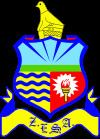Website www.zesa.co.zw Founded 1985 | Services Electricity | |
 | ||
Zimbabwe Electricity Supply Authority, (ZESA) officially called ZESA Holdings (Pvt) LTD., is a state-owned company whose task is to generate, transmit, and distribute electricity in Zimbabwe. It has organized this task by delegation to its subsidiaries, the energy generating company Zimbabwe Power Company (ZPC) and the Zimbabwe Electricity Transmission and Distribution Company (ZETDC). Other subsidiaries are investment branch ZESA Enterprises (ZENT) and internet provider PowerTel Communications (Pvt) ltd. ZESA is the only electricity generator and supplier for the public grid. For many years the company has failed to produce enough energy to meet demands. ZESA produced an estimated 8.89 bill kWh in 2007, while demand was estimated to 10.89 kWh. ZESA represents Zimbabwe in the Southern African Power Pool.
Contents
Current situation
In general the power generation capacity in Zimbabwe is too small to meet demand from the industry and private householdings. Import of electricity from surrounding countries has eased the situation somewhat, but load shedding is used on a routine basis and some rural areas do not have electricity over long periods. Zimbabwe’s difficult economic situation causes part of the problems, as coal for power stations may at times not be produced in sufficient amounts. On the other hand, the economy is hampered by the unforeseeable energy situation. Recently the revival of the economy has increased demand.
Situation for the power stations
ZESA owns the Kariba Power Station together with its Zambian counterpart, ZESCO. The station is part of the Kariba Dam project, damming the Zambezi river. The Zimbawean-owned capacity is said to be around 750 MW. ZESA also owns four thermal power stations, of which Hwange Thermal Power Station in the extreme west of the country is by far the largest with a theoretical capacity of about 920 MW. The other three at Harare, Bulawayo and Munyati have a nominal capacity of 270 MW together. In the last years the thermal power stations have only been producing part or no electricity due to coal shortages and maintenance neglect. Botswana Power Corporation (BPC) and Namibias NamPower have in 2009 made agreements to help ZESA to revive the capacity in exchange for power deliveries. Work on Hwange has led to a better situation and the three minor stations are scheduled to be revived in the first quarter of 2011. In December 2015 China agreed to provide a $1.2 billion loan to add 600 MW of generating capacity to the Hwange station.
ZESA power stations
Projected stations
Besides plans to upgrade both the Hwange plant and the Kariba dam facility, two new plants are projected, however funding is not secured.
